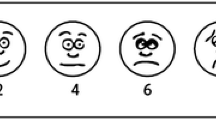Abstract
Objectives: To evaluate the dose-response relationship of increasing doses of oxymetazoline compared with placebo in normal subjects, and to determine the sensitivities of rhinomanometry, acoustic rhinometry and symptoms in discriminating between differing doses of oxymetazoline in normal subjects.
Methods: The study had a randomized, double-blind, placebo-controlled, parallel group, dose-response design. One hundred and twenty-five healthy volunteers with no nasal obstruction were randomized to administration of a single intra-nasal dose of oxymetazoline (6.25 μg, 12.5 μg, 25 μg or 50 μg) or placebo to each nasal cavity. Nasal airway resistance (NAR) was measured by active posterior rhinomanometry. Total minimum cross-sectional area (tMCA) and volume (tVOL) were measured by acoustic rhinometry. Symptoms of congestion (CON) were assessed on a visual analogue scale.
Results: The two highest doses of oxymetazoline produced a significant decrease in NAR compared with placebo (P = 0.015) but not between placebo and 12.5 μg or 6.25 μg. There was a dose-response relationship for tVOL, which increased significantly after all doses compared with placebo (P < 0.001) and showed differences between 6.25-μg and 25-μg (P < 0.014) and 12.5-μg and 50-μg (P < 0.05) doses. tMCA increased compared with placebo after all treatments (P = 0.028), but there were no significant differences between any of the active doses. There were no significant changes in CON after any treatments compared with placebo.
Conclusions: tVOL shows a clear dose-response relationship for the range of doses of oxymetazoline administered. tVOL provides a sensitive and discriminatory measure of small nasal changes after low doses of oxymetazoline. NAR is able to discriminate between doses, but is less sensitive than tVOL and tMCA, requiring a higher threshold dose before significant changes are seen in nasal patency.
Similar content being viewed by others
Author information
Authors and Affiliations
Additional information
Received: 1 March 1999 / Accepted in revised form: 17 May 1999
Rights and permissions
About this article
Cite this article
Taverner, D., Bickford, L., Shakib, S. et al. Evaluation of the dose-response relationship for intra-nasal oxymetazoline hydrochloride in normal adults. E J Clin Pharmacol 55, 509–513 (1999). https://doi.org/10.1007/s002280050665
Issue Date:
DOI: https://doi.org/10.1007/s002280050665




